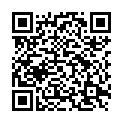|
|
|
| Module code: MARPF-587 |
|
4VU (4 hours per week) |
|
6 |
| Semester: according to optional course list |
| Mandatory course: no |
Language of instruction:
German |
Assessment:
Written examination (Compliance/90 min.) AND short presentation with subsequent discussion (max. 15 minutes) (Fraud)
[updated 27.01.2023]
|
MARPF-587 Accounting and Finance, Master, ASPO 01.10.2017
, optional course
|
60 class hours (= 45 clock hours) over a 15-week period.
The total student study time is 180 hours (equivalent to 6 ECTS credits).
There are therefore 135 hours available for class preparation and follow-up work and exam preparation.
|
Recommended prerequisites (modules):
None.
|
Recommended as prerequisite for:
|
Module coordinator:
Prof. Dr. Jochen Pilhofer |
Lecturer:
Andreas Drossel
Dipl.-Kfm. Patrick Weber von Freital
Michael Weis
[updated 21.03.2024]
|
Learning outcomes:
After successfully completing this module, students will be able to:
I) Fraud
- understand what fraud is, in what forms it can occur in corporate practice, by whom and in what context fraud typically occurs;
- understand what practical risk factors and "red flags" may indicate an increased incidence of fraud;
- understand which legal regulations are relevant for the external (financial) statement auditor;
- understand what the scope of the (financial statement) auditor´s responsibilities are in the case of fraudulent acts;
- recognize how the (financial statement) auditor identifies fraud in professional practice and addresses it as part of its audit approach;
- explain which reporting requirements (internal and external) exist.
II) Compliance
- Students will be able to explain the meaning of the term "compliance" and distinguish it from related topics, explain the main compliance fields in a company, show the risks of non-compliance, as well as the goals and benefits of compliance, and present the components of a compliance management system.
[updated 27.01.2023]
|
Module content:
I) Fraud
- Definition of fraud, its various manifestations, and the economic context in which fraud happens;
- What are the differences of internal and external fraud and the resulting consequences and the connection with money laundering;
- Practical case studies for the identification of fraud and the analysis of fraud factors;
- Fraud from the perspective of the external (financial) statement auditor;
- Detection of irregularities in the course of the audit of financial statements (IDW PS 210), scope of application, effects on the audit approach, reporting obligations, discussion based on practical examples;
- Maintaining a critical attitude is one of the auditor´s professional duties (“Der Betrieb” issue 3/2022) and problematic areas in practice;
- Principles of planning annual audits (IDW PS 240) against the background of fraud based on a specific use case;
Module content:
I) Fraud
- Definition of fraud, its various manifestations, and the economic context in which fraud happens;
- What are the differences of internal and external fraud and the resulting consequences and the connection with money laundering;
- Practical case studies for the identification of fraud and the analysis of fraud factors;
- Fraud from the perspective of the external (financial) statement auditor;
- Detection of irregularities in the course of the audit of financial statements (IDW PS 210), scope of application, effects on the audit approach, reporting obligations, discussion based on practical examples;
- Maintaining a critical attitude is one of the auditor´s professional duties (“Der Betrieb” issue 3/2022) and problematic areas in practice;
- Principles of planning annual audits (IDW PS 240) against the background of fraud based on a specific use case;
- Identification and assessment of error risks and the auditor’s reactions to said error risks (IDW PS 261) based on a use case;
- Other related auditing standards (audit evidence, reporting requirements, quality assurance), as well as the regulations of the profession, liability risks of the auditor in case of non-recognition; presentation based on practical examples.
II) Compliance
A) Presentation and organizational matters
B) Compliance - requirements and relevance
I. Stakeholders of compliance requirements
II. Relevance within the company
III. Topics and concrete requirements
C) (Non)-Compliance - goals, benefits, risks
I. Goals and Benefits
II. Sanctions for non-compliance
D) Compliance management systems
I. Introduction
II. IDW PS 980
III. ISO 37301
IV. Compliance culture and goals
V. Risk assessment
VI. Compliance program
VII. Compliance organization
VIII. Compliance communication
IX. Monitoring and improvement
X. Implementing a CMS in practice
[updated 27.01.2023]
|
Teaching methods/Media:
Lecture and tutorial
[updated 27.01.2023]
|
Recommended or required reading:
I) Fraud
• Publication from the IDW: IDW Prüfungsstandards
II) Compliance
• Hauschka/ Moosmayer/ Lösler: Corporate Compliance, 3. Auflage 2016
• Bay/ Hastenrath: Compliance-Management-Systeme, 3. Auflage 2022
• IDW Prüfungsstandard: Grundsätze ordnungsmäßiger Prüfung von Compliance Management Systemen (IDW PS 980)
• Zertifizierungsstandard ISO 37301 für Compliance-Managementsysteme
[updated 27.01.2023]
|


